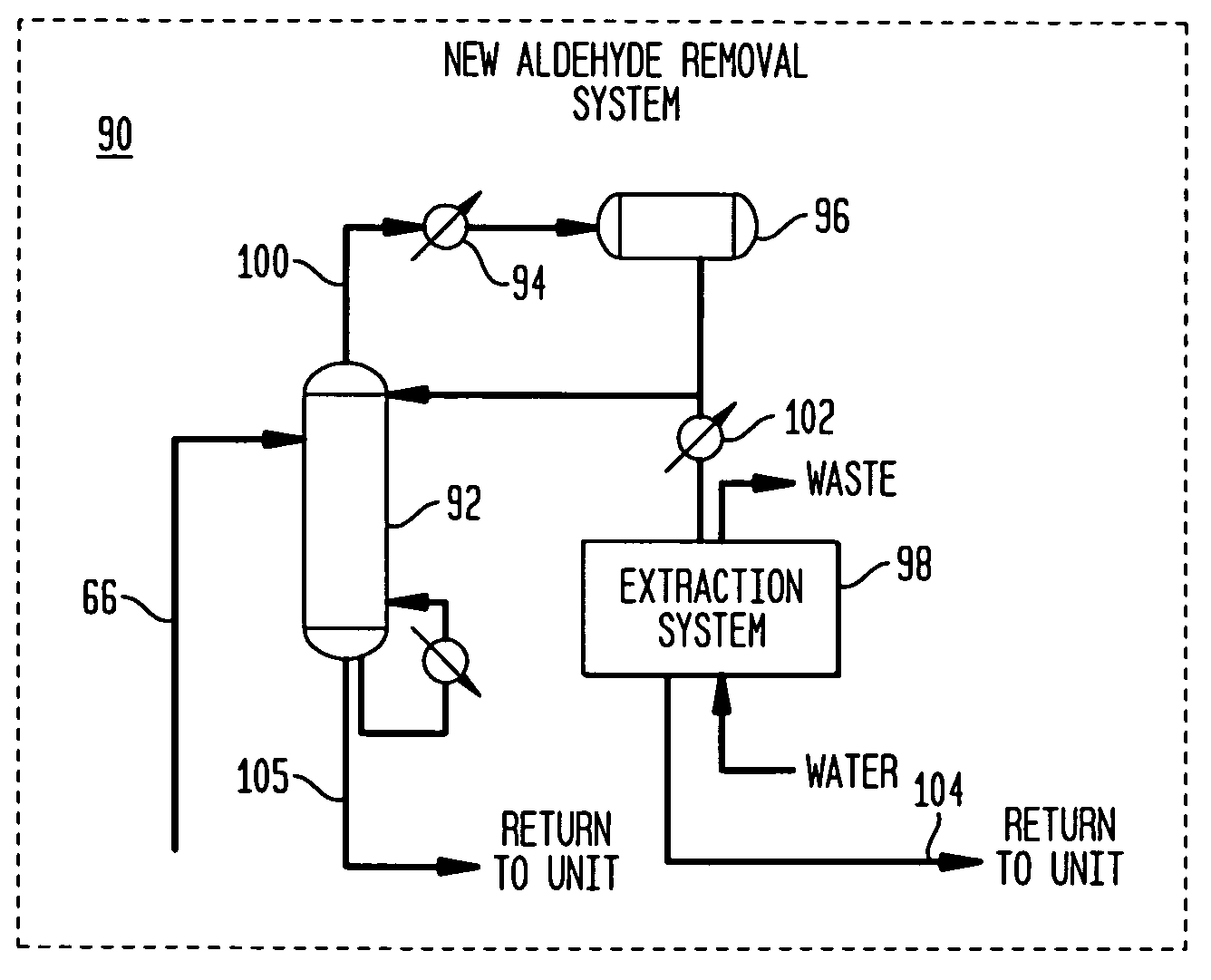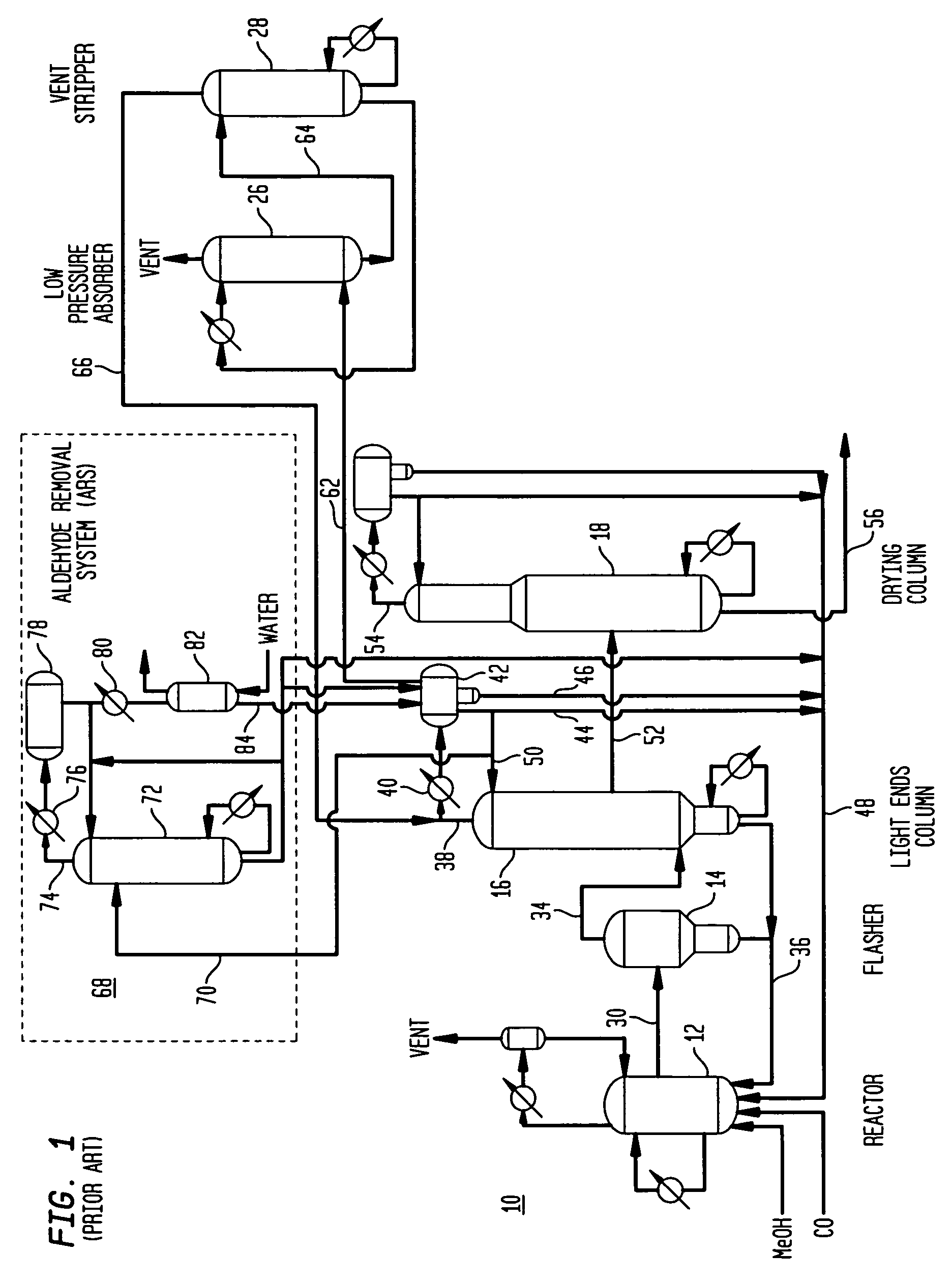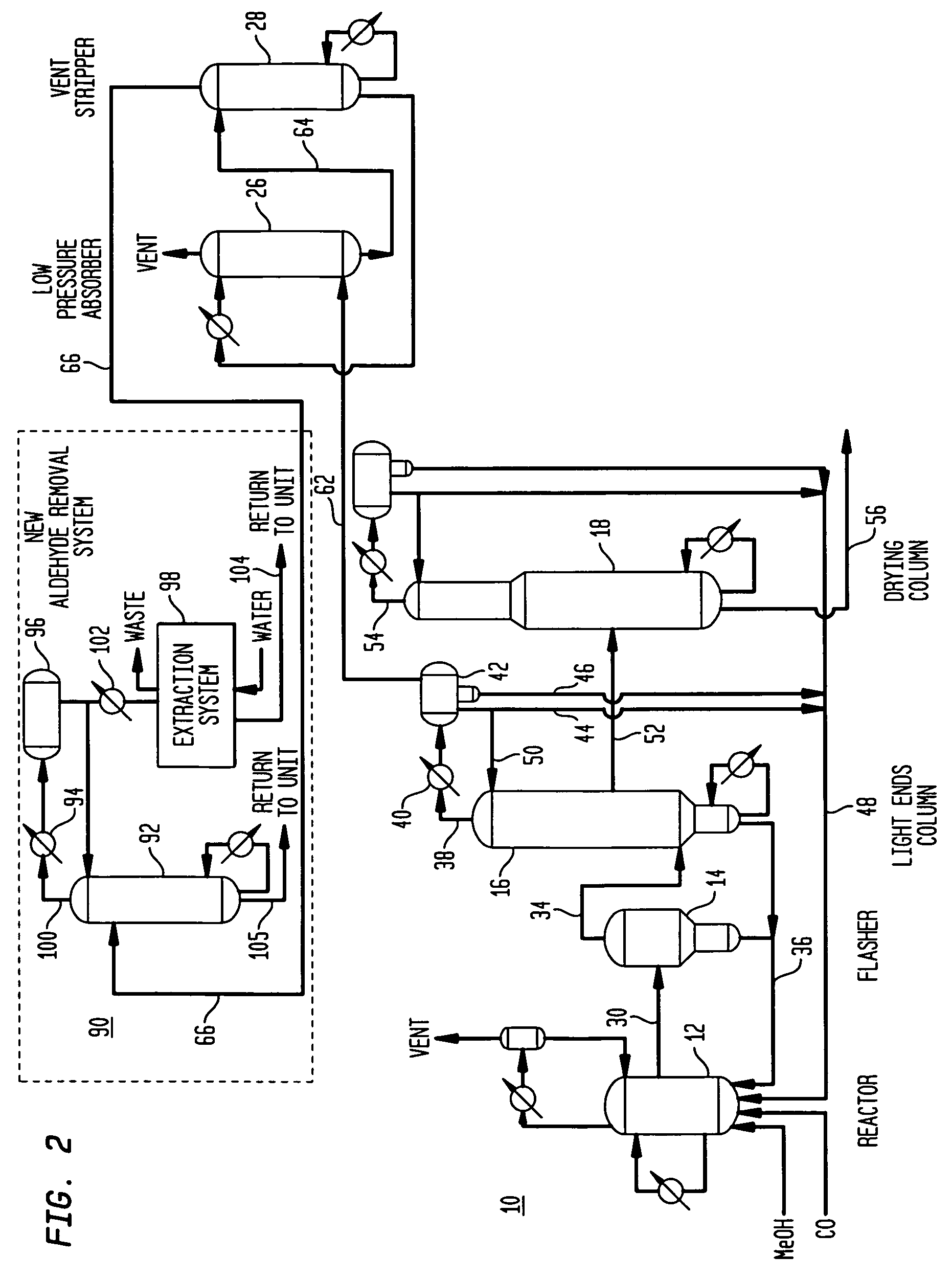Methanol carbonylation with improved aldehyde removal
a technology of aldehyde removal and methanol carbonylation, which is applied in the preparation of carboxylic compounds, solvent extraction, separation processes, etc., can solve the problems of difficult removal, affecting quality, and poisoning of vinyl acetate catalysts, and achieves the effect of reducing the volume of light ends, operating and capital costs
- Summary
- Abstract
- Description
- Claims
- Application Information
AI Technical Summary
Benefits of technology
Problems solved by technology
Method used
Image
Examples
Embodiment Construction
[0017]The invention is described in detail below with reference to several embodiments for purposes of exemplification and illustration only. Modifications to particular embodiments within the spirit and scope of the present invention, set forth in the appended claims, will be readily apparent to those of skill in the art.
[0018]Unless more specifically defined below, terminology as used herein is given its ordinary meaning. % and like terms, for example, refer to weight percent, unless otherwise indicated.
[0019]“Aldehyde impurity” refers to acetaldehyde and related compounds which may be present in vent gas.
[0020]“Light ends” refers to reaction mixture components which are more volatile than acetic acid. Typically, “light ends” refers to methyl iodide and methyl acetate which are the predominant components.
[0021]“Stripping” refers to removing a component from a mixture by evaporation or distillation.
[0022]Referring to FIGS. 1, 2, 4 and 5 there is shown a carbonylation system 10 of t...
PUM
| Property | Measurement | Unit |
|---|---|---|
| weight percent | aaaaa | aaaaa |
| weight percent | aaaaa | aaaaa |
| weight percent | aaaaa | aaaaa |
Abstract
Description
Claims
Application Information
 Login to View More
Login to View More - R&D
- Intellectual Property
- Life Sciences
- Materials
- Tech Scout
- Unparalleled Data Quality
- Higher Quality Content
- 60% Fewer Hallucinations
Browse by: Latest US Patents, China's latest patents, Technical Efficacy Thesaurus, Application Domain, Technology Topic, Popular Technical Reports.
© 2025 PatSnap. All rights reserved.Legal|Privacy policy|Modern Slavery Act Transparency Statement|Sitemap|About US| Contact US: help@patsnap.com



